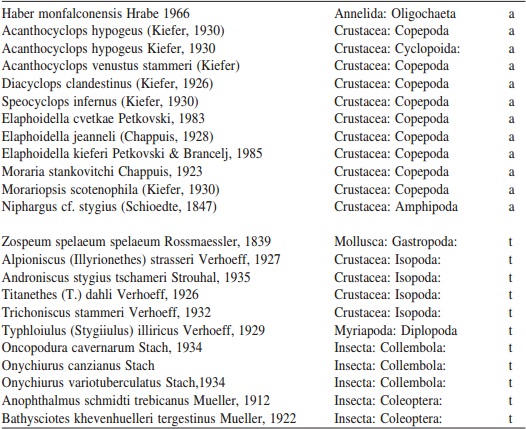Biological Monitoring in Caves
DOI:
https://doi.org/10.3986/ac.v31i1.403Abstract
Leta 1999 sva opisala 20 jam in kraških vodnjakov, v katerih živi po 20 ali več na podzemlje vezanih vrst živali. Pet izmed teh jam je ali pa je bilo urejenih za turistično izrabo: Postojnsko-planinski jamski sistem (Slovenija), Sistem Baget - Sainte Catherine (Francija), Shelta Cave (Alabama, ZDA), Mammoth Cave (Kentucky, ZDA) in Vjetrenica (Bosna in Hercegovina). Prav dejstvo, da imajo lahko močno preurejene jame z visokim številom obiskovalcev tudi pestro favno, kaže, da se oboje ne izključuje. Številne standardne tehnike za vzorčevanje, so uporabne le v maloštevilnih jamah. Te metode so le omejeno uporabne. Onesnaženje je lahko za jamske živali neposredno pogubno ali pa omogoča površinskim živalim, da tudi v podzemlju izpodrivajo. Zato moramo zasledovati tako gostoto favne, kot tudi spremembe v njeni taksonomski sestavi. Ob načrtovanju novih posegov je treba pred kakršnim koli urejanjem raziskati krajevno favno, tako površinsko kot podzemeljsko. Za biološko zasledovanje stanja priporočava naslednje: 1. vzorčenje skozi daljše obdobje; 2. nastavljanje vab v kopenskih in v vodnih habitatih; 3. nastavljanje lončastih pasti v kopenskih habitatih.
In 1999, we described the twenty caves and karst wells that have 20 or more species of obligate cave organisms living in them. Among these caves five are developed as tourist caves — Postojna-Planina Cave System (Slovenia), Baget - Sainte Catherine System (France), Shelta Cave (Alabama, USA), Mammoth Cave (Kentucky, USA), and Vjetrenica Cave (Bosnia & Herzegovina). For these and other tourist caves, there is a special responsibility to protect this fauna. The very fact that caves with large numbers of visitors and with modifications to the cave can have high species diversity shows that the two are not incompatible. Many of the standard sampling techniques, may work in some caves only; they are of restricted use. Pollution may be either directly detrimental to the cave fauna or may enable surface species to outcompete the endemic cave fauna. Therefore, changes in the quantity of fauna have to be monitored as well as changes in its taxonomic composition. In the case of new tourist installations, the local cave and surface fauna has to be investigated prior to any modifications. For biological monitoring, we recommend one of the following: 1. minimum-time census, rather than minimum-area census; 2. baiting in both terrestrial and aquatic habitats; 3. pitfall traps (baited or unbaited) in terrestrial habitats.
Downloads

Downloads
Published
How to Cite
Issue
Section
License
Authors guarantee that the work is their own original creation and does not infringe any statutory or common-law copyright or any proprietary right of any third party. In case of claims by third parties, authors commit their self to defend the interests of the publisher, and shall cover any potential costs.
More in: Submission chapter




